50+ Sample Employee Checklists
-
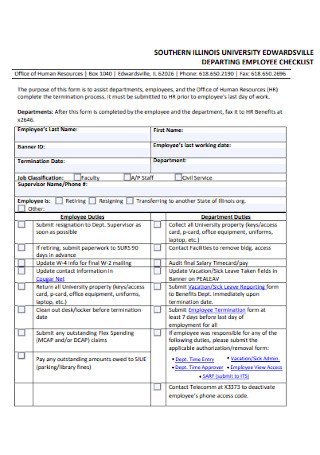
University Employee Checklist
download now -
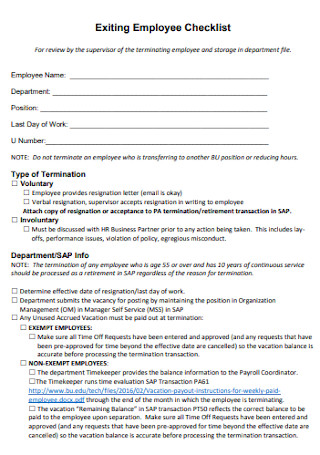
Exiting Employee Checklist
download now -
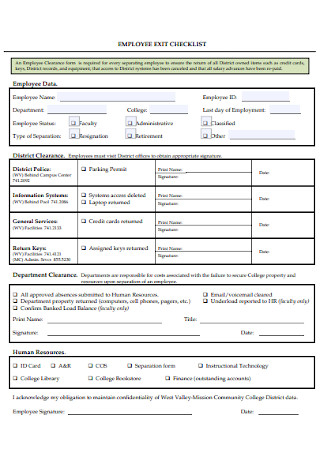
Employee Exit Checklist Template
download now -
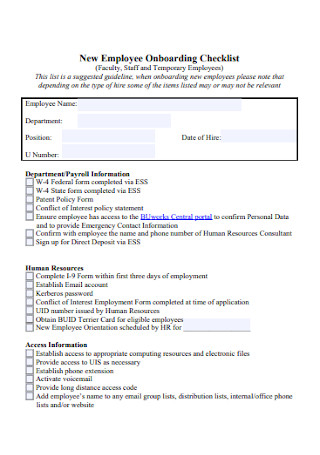
New Employee Onboarding Checklist
download now -

Employee Welcome Program Template
download now -
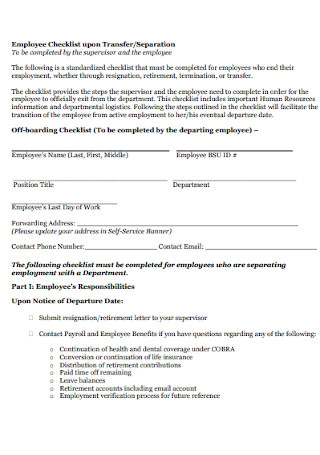
Employee Transfer Checklist
download now -
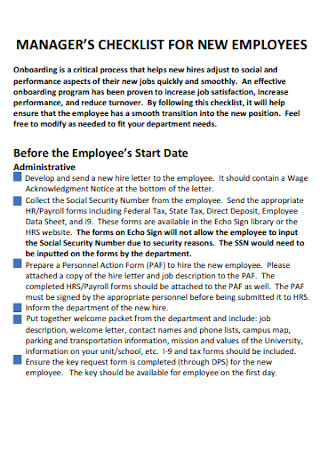
Manager Checklist for New Employees
download now -
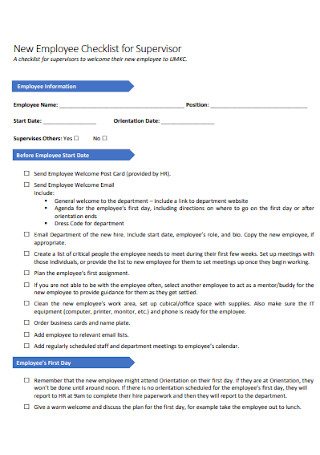
New Employee Checklist for Supervisor
download now -
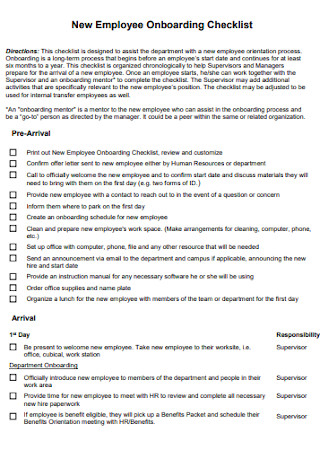
Employee Onboarding Checklist Example
download now -
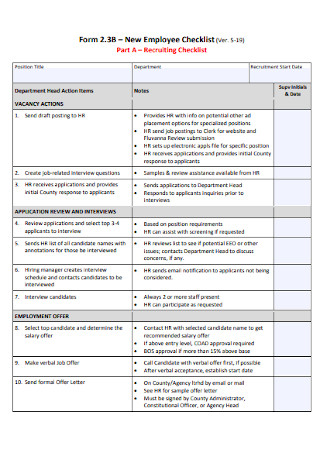
Employee Recruiting Checklist
download now -

Volunteer Employee Checklist
download now -

Employee Equipment Checklist Template
download now -
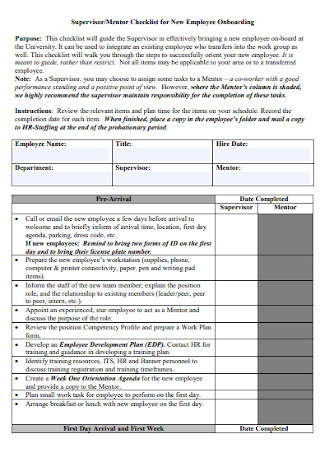
Checklist for New Supervisor Employee
download now -

Hiring Manager Checklist
download now -
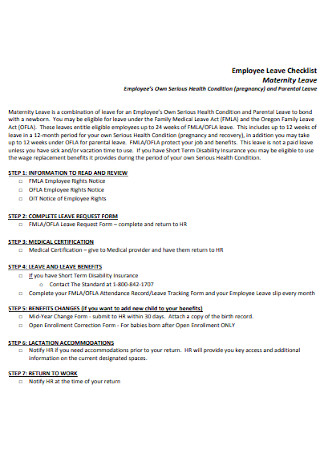
Employee Leave Checklist
download now -
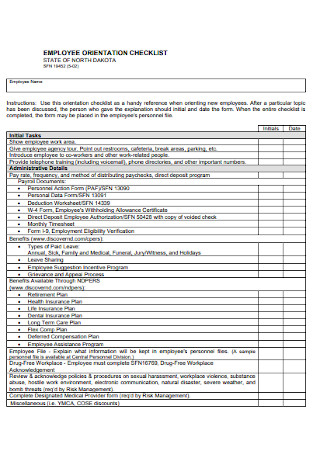
Employee Orientation Checklist
download now -
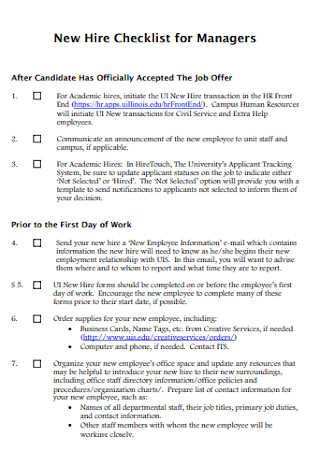
New Hire Checklist for Managers
download now -

Separating Employee Checklist
download now -
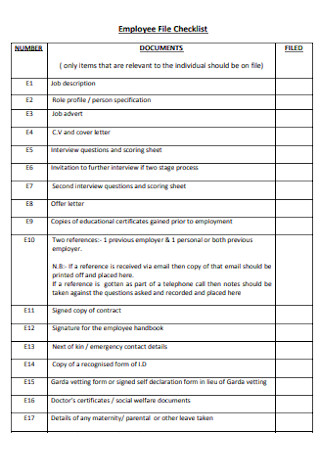
Simple Employee File Checklist
download now -
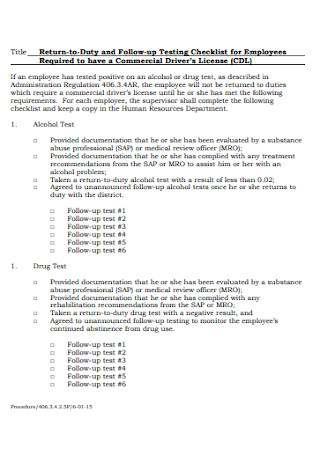
Employee Testing Checklist
download now -

Employee Travel Checklist Template
download now -
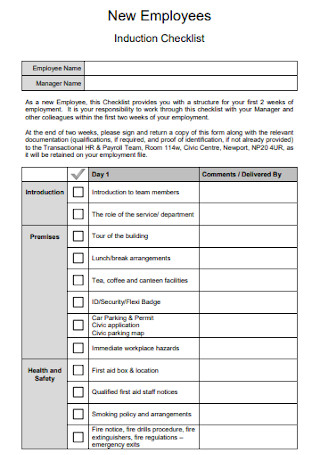
Employee Induction Checklist
download now -
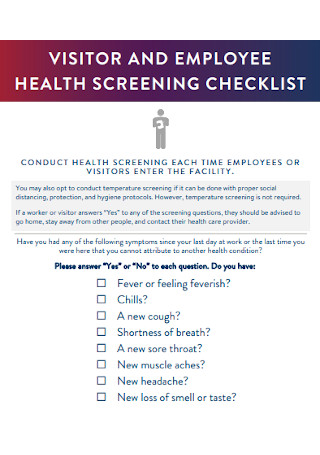
Employee Health Screening Checklist
download now -
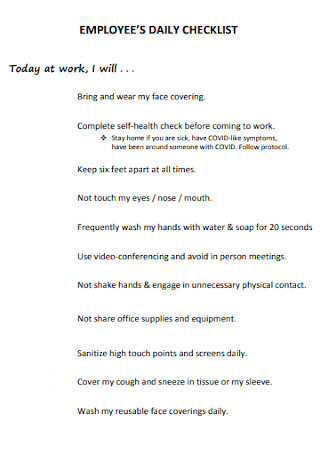
Employee Daily Checklist Template
download now -
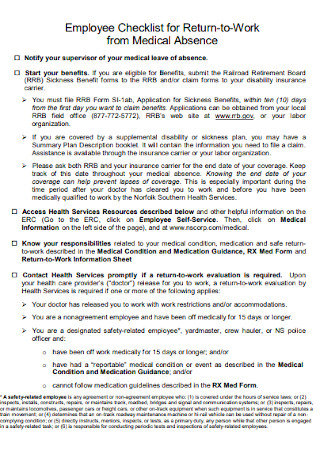
Medical Employee Work Checklist
download now -
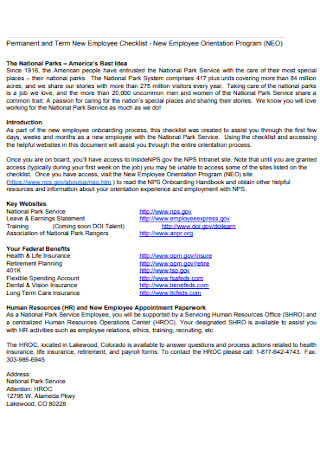
Permanent and Term New Employee Checklist
download now -
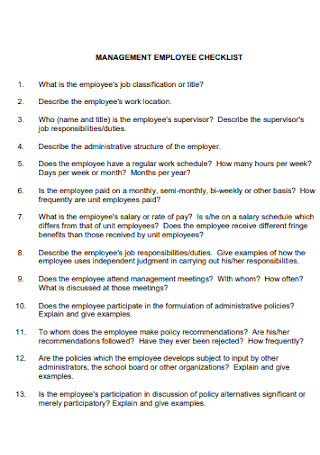
Management Employee Checklist
download now -

Orinting New Employee Checklist
download now -

IT Employee Checklist
download now -

Corporate Employee Checklist Template
download now -
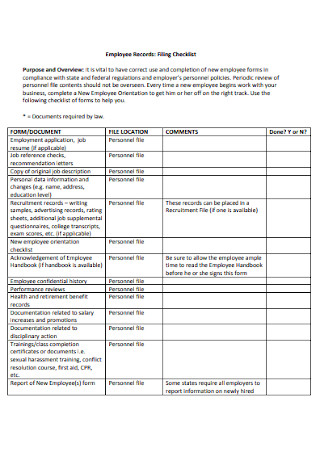
Employee Record Filliing Checklist
download now -
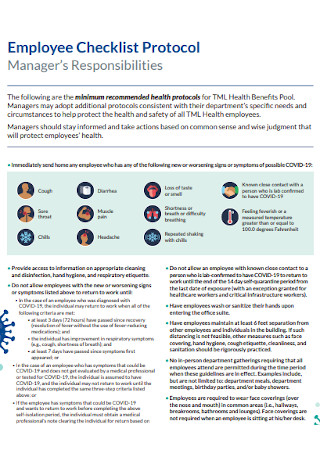
Employee Checklist Protocol Template
download now -
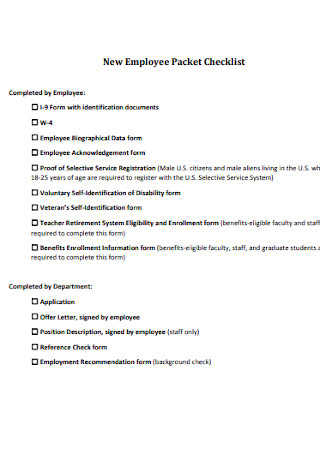
Employee Packet Checklist
download now -
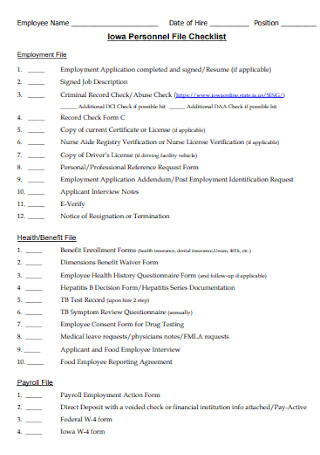
Standard Employee Checklist
download now -
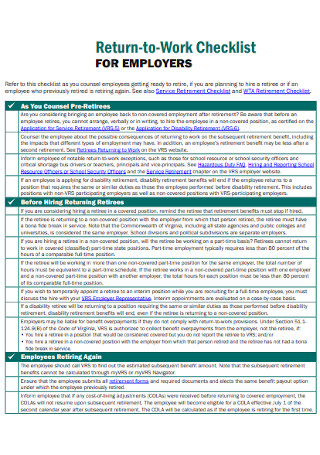
Work Checklist for Employees
download now -
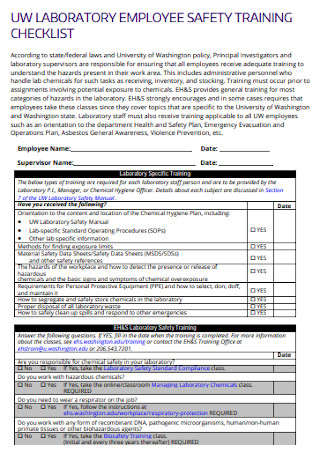
Laboratory Employees Training Checklist
download now -

Employee Separation Checklist Template
download now -

Hybrid Counseling Checklist for Employee
download now -

Employee Training Checklist Template
download now -
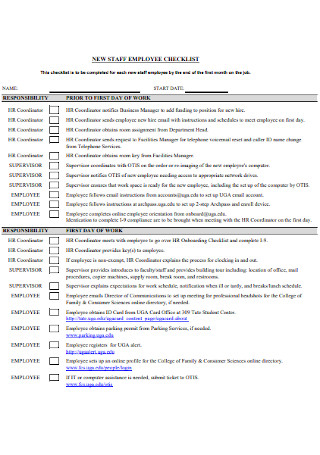
New Staff Employee Checklist
download now -
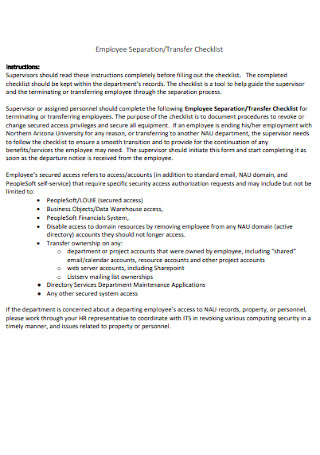
Employee Separation and Transfer Checklist
download now -

Employee Worksite Checklist
download now -
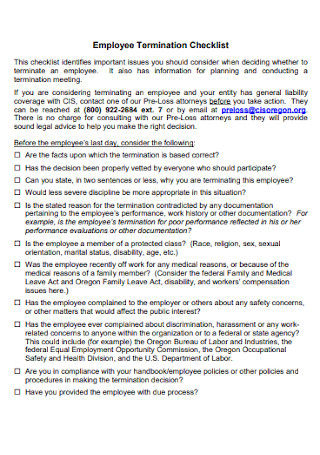
Employee Termination Checklist Template
download now -
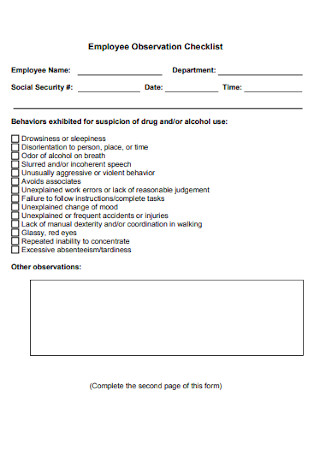
Employee Observation Checklist Template
download now -
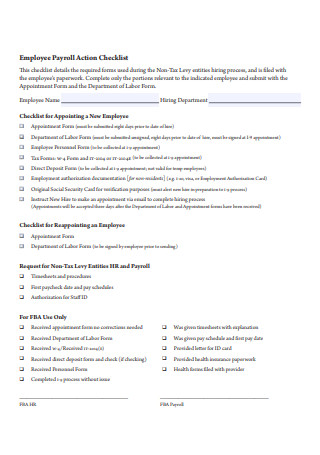
Employee Payroll Action Checklist
download now -
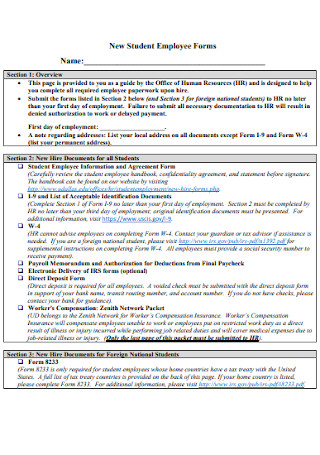
New Student Employee Forms
download now -
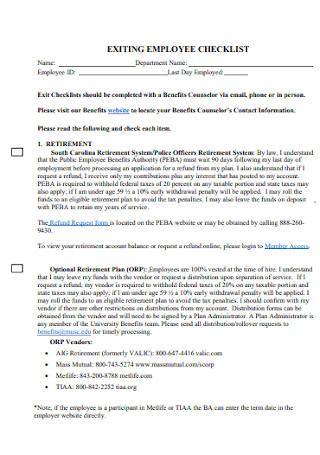
Exiting Employee Checklist Template
download now -

Employee File Checklist Format
download now -
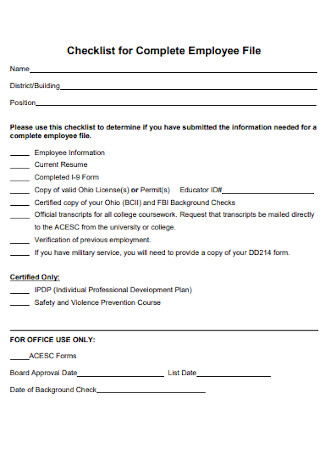
Checklist for Complete Employee File
download now -
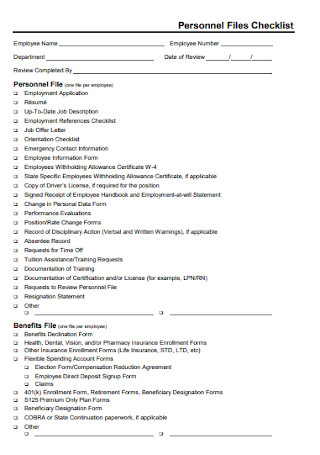
Employee Personnel Checklist Template
download now -
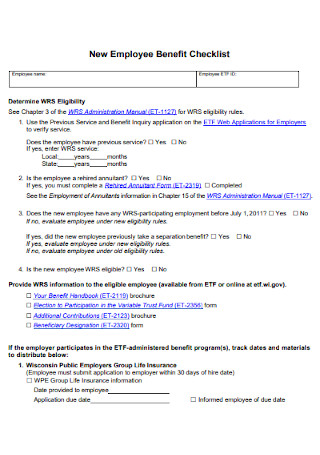
New Employee Benefit Checklist
download now -
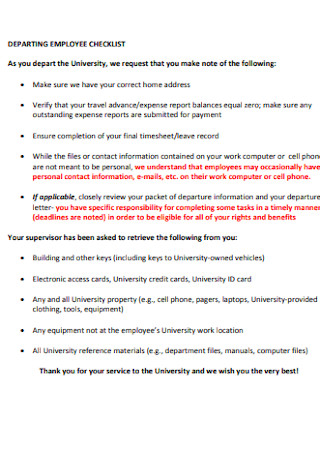
Departing Employee Checklist
download now -

Employee Recruiting Checklist
download now
FREE Employee Checklist s to Download
50+ Sample Employee Checklists
What Is an Employee Checklist?
Types of Employee Checklists
Sample Items In an Employee Checklist
How to Create an Employee Checklist
FAQs
How do I create an employee checklist in Excel?
What is a new hire employee checklist?
What should be in a HR file?
What Is an Employee Checklist?
An employee checklist is a comprehensive checklist meant to keep tabs on the various activities and requirements relating to an employee’s needs. The checklist may serve different purposes, from employee onboarding to employee separation or termination.
According to data compiled by G2, a majority of organizations, about 58%, say that their onboarding program is primarily focused on paperwork and company processes. Still, around 22% of companies have no formal onboarding program.
Types of Employee Checklists
There are different kinds of employee checklists, each serving a specific purpose. Typically, Human Resources is tasked to come up with these checklists since it is their duty to oversee the needs and concerns of anything manpower or employee-related. The following are just some common examples of the different kinds of employee checklists.
Sample Items In an Employee Checklist
The content of your employee checklist would highly depend on your objective and the kind of checklist you are preparing. An average checklist is also no more than a page. But there can be many items to tick off in an employee checklist. Again, it all depends on your needs and the kind of checklist you are creating.
How to Create an Employee Checklist
To create an employee checklist, you need to have a good understanding of what it is that you need. And if you are looking for something quick and easy, a sample template can be used as a guide and reference. Select a sample checklist from the examples above and follow the step-by-step guide below.
Step 1: Objective
The first step in creating an employee checklist is determining what kind of checklist you need in the first place. You have to establish your objectives clearly. Why do you need a checklist in the first place? What do you hope to accomplish when you’ve ticked off all the items on your employee checklist? These are the types of questions you should be asking when stating your objectives. Keep it brief and straight to the point. A couple of specific or targeted objectives should do the job. You don’t want to lengthen this section any more than a few lines because it merely serves as an introductory section.
Step 2: Format
The next step is determining the type of format you want. Again, it would greatly depend on your preferences and needs. An average checklist is simple and easy to make. If you want a quick solution, using a predesigned template is your best bet. It is important to use a format that is easy to understand and simple enough to construct. Whether it’s a new employee checklist or a training checklist, you want to keep your list organized at all costs. It would also help if the checklist items were arranged in a logical order, either chronologically or according to urgency.
Step 3: Item List
Once you have established the right format, then you can proceed to the checklist itself. Most checklists rarely go beyond a single page. However, how general or specific the items on your checklist would still highly depend on you. The most basic list simply enumerates tasks or reminders using bullet points or checkboxes. But if you want a more detailed checklist, you can include sub reminders below each item. For example, you can provide other key details such as the target or due date and the person responsible or in-charge.
Step 4: Other Reminders
The last step is optional but it can provide additional help. This section is dedicated to any other important reminders that you may have. You can provide a couple of brief notes regarding any item that might need further clarification. These reminders can be indicated below your checklist or at the bottom of the page. For example, there are times you wouldn’t have all the information you need yet, so you can note that it is still TBA or to be announced. Or you might need to revisit or follow up on a particular item or entry on your checklist. You can take note of this so you don’t end up forgetting about it.
FAQs
How do I create an employee checklist in Excel?
To create an employee checklist in Excel, you can create a basic checklist from scratch or it would be easier and more convenient to use a predesigned template. With the latter, you can save a ton of time and effort. Simply choose any available Excel checklist template and edit it according to your needs.
What is a new hire employee checklist?
A new hire employee checklist is a detailed checklist that helps HR personnel keep track of new employee requirements. The checklist usually includes requirements, tasks, reminders, etc.
What should be in a HR file?
A basic HR file can have a number of key documents such as job descriptions, job offers, academic transcripts, performance appraisal forms, bank forms, and even warning letters or disciplinary notices.
Creating an employee checklist is quick and easy if you know your objective or purpose. Browse the wide selection of free editable templates above, choose one that best suits your needs and get started on your own checklist now!
